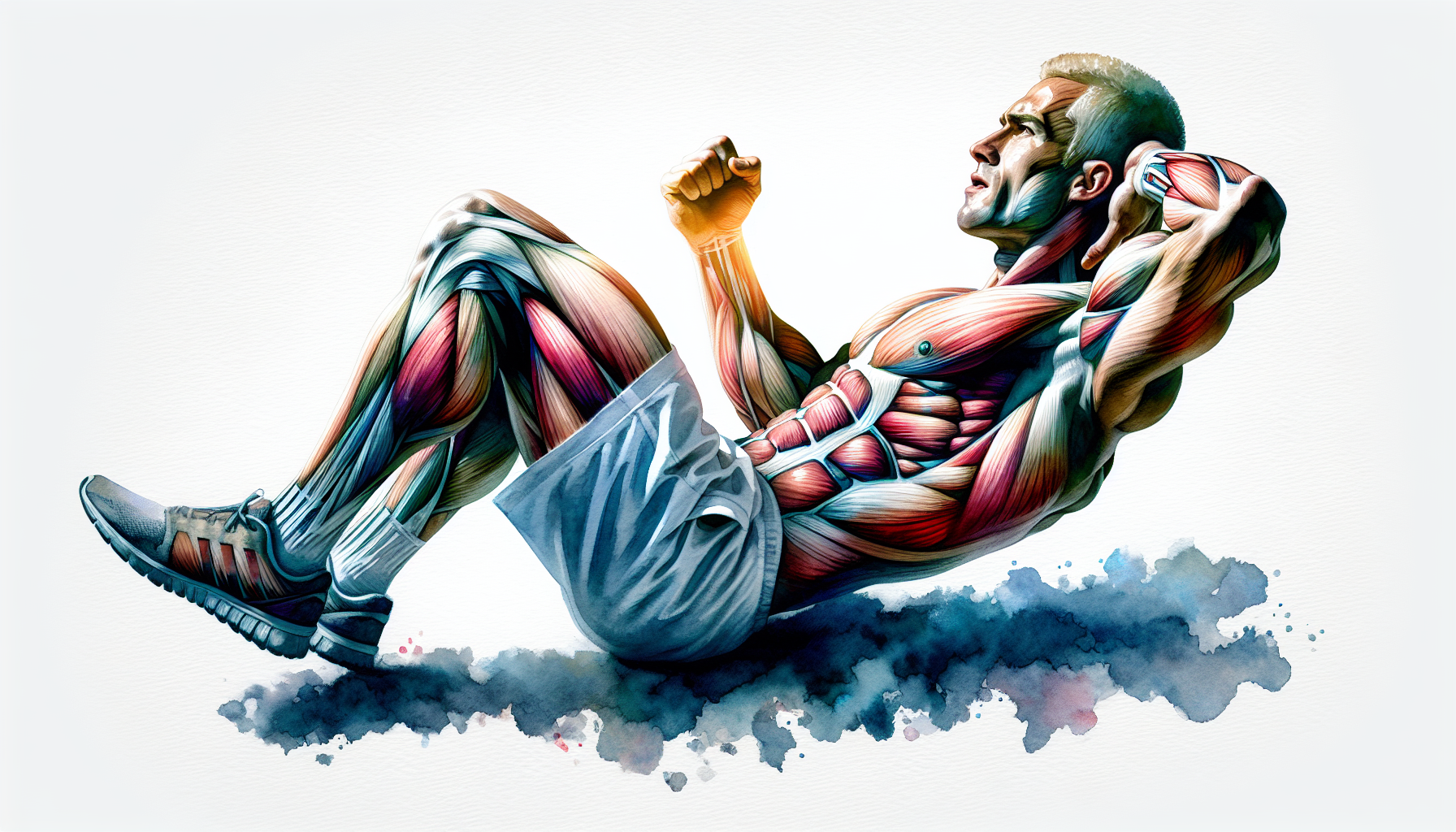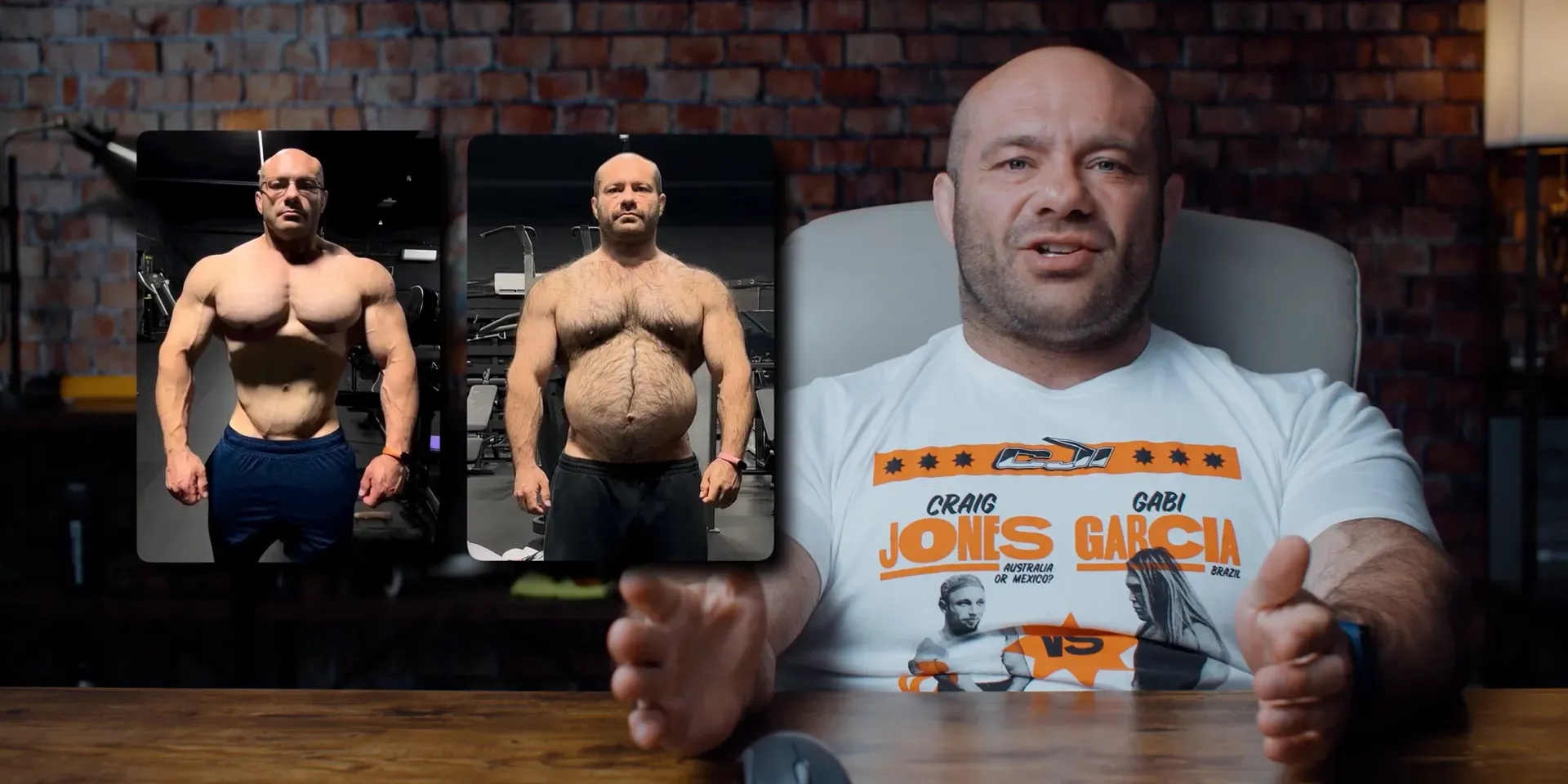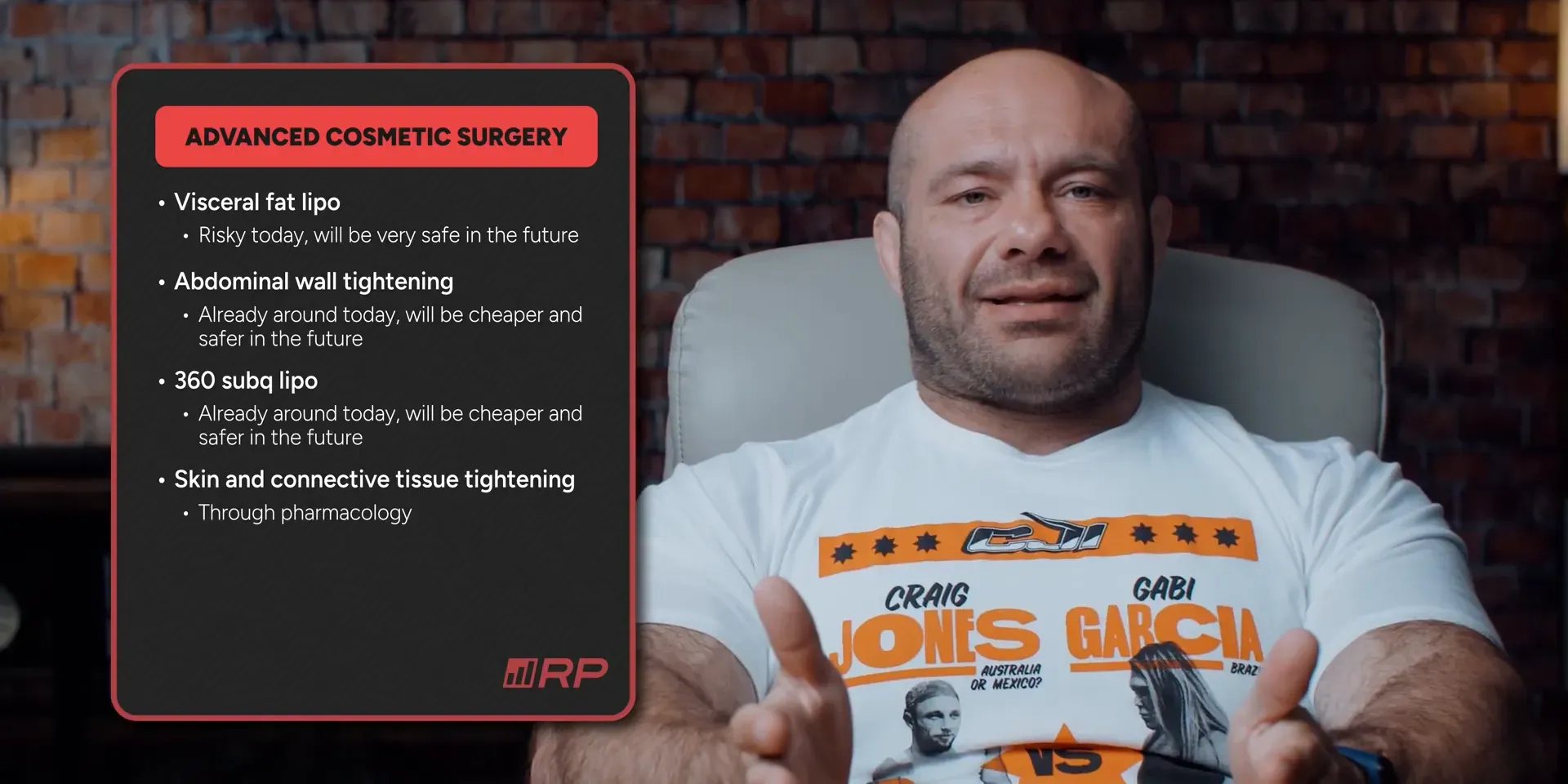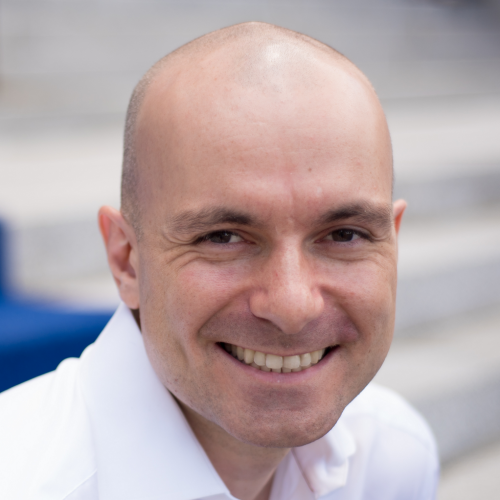How to Lose Belly Fat: Medical & Science-Based Tools
Science-backed ways to shrink your waist, reduce visceral fat, and improve your physique

Key takeaways
- Spot reduction via crunches is a myth; target visceral fat by reducing overall intake and looking into medical tools.
- You can dramatically reduce visceral belly fat with drugs like tirzepatide—more than diet alone.
- You should pair fat loss with resistance training and high protein to keep muscle and improve physique.
Try this today
✓ Take one clear action: start a consistent resistance training plan and eat at a modest calorie deficit with 1.6–2.2 g/kg protein.
Want to lose belly fat and improve your health by targeting the hardest-to-shift fat?
In this expert review, we analyze, critique, and expand on Renaissance Periodization's Dr. Mike's practical breakdown of belly fat, visceral fat, and the treatments that actually change waist size.
What makes this review different?
- Carefully reviewed and fact-checked by experts.
- Little-known tips to prioritize visceral fat loss and maintain muscle.
- Complete workout plan inspired by combining resistance training, high-protein nutrition, and targeted clinical tools.
Why should you listen to us? We've published 300+ articles, all rigorously reviewed by an exercise scientist with 25+ years of real-world training experience.
If you want to continue, read on. This guide breaks the science into actions you can use.
Related:
- Dr. Mike Israetel on Muscle Gain, Fat Loss, Steroids & Life: In-Depth
- Is the RP hypertrophy app the most advanced on the market?
- How to Gain Muscle & Lose Fat: A 4-Step Process (With Meal Plan)
In a Nutshell: Belly fat and visceral fat explained
You want a smaller waist and better health. Belly fat comes from two main storage places: under the skin (subcutaneous) and inside the abdomen around organs (visceral). You can lose subcutaneous fat fairly predictably with calories and cardio. Visceral fat behaves differently. It’s stubborn, toxic, and linked to aging and disease. The newest drugs change that equation. They preferentially cut visceral fat, improving both health markers and how you look.
Your training and diet matter. You must protect muscle while losing fat. Combine resistance training with smart nutrition to keep gains and make the lean look better.
Short version: target visceral fat with clinical tools if needed, but train and eat sensibly to keep muscle and long-term results.
Key concepts
- Hip and bone structure: Genetics set a baseline for waist width.
- Abdominal wall laxity: Weak or loose fascia makes the stomach bulge despite low body fat.
- Fat compartments: Subcutaneous vs visceral fat—different behaviors and health consequences.
Why your waist changes: the four drivers
You likely think belly fat is just about calories. It’s not that simple. Your waist size comes from four main things: hip width, abdominal wall tightness, subcutaneous fat, and visceral fat. Here’s how each works and what you can realistically change.
1. Hip size and bone structure
Hip width sets a frame. If you have naturally narrow hips, your waist will usually appear smaller. If you have wide hips, your midsection looks broader. That’s mostly fixed. You can’t easily change bone structure without extreme surgery. So, accept your frame. Train around it. Build shoulders and upper back to create better proportions.
2. Abdominal wall laxity
Some people have a loose abdominal wall. The muscles and fascia don’t hold the belly in tightly. That causes a pot-belly look even at low fat. You can test this: suck in. If the waist shrinks dramatically, you have laxity. If it won’t budge, that’s likely fat, not lax fascia.

Surgery can help. Abdominal wall tightening or mesh corsets exist. They’re major procedures. They can transform the look of a lean athlete who has a big belly from lax fascia. But surgery is expensive and involves recovery. Consider it only after other options and when you’re close to your goal shape.
3. Subcutaneous fat: the stuff under your skin
This is the fat you can pinch. If you store lots of fat on your sides, lower back, and the front of your stomach, your belly will be big. Standard diet and exercise remove this fat pretty well. But you cannot pick and choose specific spots to burn; you lose it systemically. Still, subcutaneous loss often drives most visible transformation when people diet down.
4. Visceral fat: the dangerous interior fat
Visceral fat sits between your organs. It pushes your abdomen outward from the inside. People can be lean and still have a visceral belly. That’s the "shredded guy with a pooch" look. Visceral fat is worse for health than subcutaneous fat. It drives inflammation, worsens cholesterol and triglycerides, and increases insulin resistance. You often want to remove it not just for looks, but for life expectancy and function.
Why visceral fat matters more than aesthetics
Visceral fat hurts your health. It raises systemic inflammation. It increases your risk for heart disease and type 2 diabetes. It ages you. Evolution likely wired attraction to smaller waists because it signals youth and metabolic health. So a small waist looks better and it often means better health.
As you get older, visceral fat tends to creep up. Even if you diet and get lean, regained weight and aging often shift fat storage inward to the viscera. The result: a lean, muscular person with a round belly. That’s common and frustrating for people who train hard.
The limits of diet, exercise, and "spot reduction"
Crunches don’t help belly fat. Spot reduction is a myth. You cannot choose which fat depots shrink by training one muscle. Dieting removes fat systemically, and it tends to strip subcutaneous fat first. That’s great for visible change but not enough for visceral fat if your body prefers to hold it.
When you lose weight the first time, you typically lose more under-skin fat than visceral fat. Then when you regain, visceral fat often comes back faster than the other fat. Over years, that leads to a higher visceral-to-subcutaneous ratio. You end up leaner elsewhere, but your gut grows. That's the "old-man lean" look.
If your goal is a smaller waist and better health, you must think beyond calories. You must preserve muscle and ideally address visceral fat directly. That leads us to the treatment that actually works.
The solution that actually targets belly fat: tirzepatide and the new class of drugs
If you want visceral fat gone, the best single tool we have right now is a drug called tirzepatide. It’s a dual agonist of GLP-1 and GIP. That means it hits two gut hormones. It drops hunger massively. That makes dieting much easier. It also seems to preferentially reduce visceral fat more than diet alone or other drugs like semaglutide (Ozempic).
How tirzepatide helps
- Reduces appetite dramatically, making consistent calorie deficits realistic.
- Improves metabolic markers: lowers inflammation, improves lipids, and reduces insulin resistance.
- Targets visceral fat more than other weight-loss methods.
Tirzepatide doesn’t cause magic overnight. If you take it for one week, the visual change is tiny. Over months and years, though, it shifts where your body stores fat. You will lose more visceral fat with tirzepatide than with the same weight loss achieved by diet alone. That improves your health and your waistline.
Why this matters for your physique
When you lose visceral fat while protecting muscle, three things happen:
- Your waist shrinks and core looks cleaner.
- Your metabolic health improves (cholesterol, triglycerides, insulin sensitivity).
- You look younger because visceral fat also tracks with age.
Combine tirzepatide with resistance training and high protein. That keeps your muscle. More muscle means better shape and a higher resting metabolic rate. That’s the right way to use these drugs for long-term aesthetics and health.
Other new drugs on the horizon
Tirzepatide is not the last word. New multi-agonists are coming. One of the most promising is a triple agonist often discussed under the name retatride (or similar compounds in late-stage trials). It has GLP, GIP, and a glucagon agonist. That last action raises resting metabolic rate slightly, so you burn more calories without stimulants.
Early trials show dramatic weight loss and powerful reductions in liver fat. In one small trial, people with non-alcoholic fatty liver disease saw complete resolution in many cases. These drugs could become available in the next few years and might beat tirzepatide on speed and magnitude of visceral fat loss.
Surgery options and when to consider them
There are surgical routes. Surgeons can remove visceral fat directly by opening the abdominal cavity and doing liposuction. That’s risky. I don’t recommend it now. It’s invasive and not yet standardized.
Abdominal wall tightening is an option if lax fascia causes your belly. It’s a major operation, but it can be transformative for lean people with a relaxed midline. Mesh corsets and 360-degree lipo exist too. They work, but they cost a lot and carry recovery time.
Skin and connective tissue: the future fixes
Loose skin is another problem after big weight loss. Today the fix is surgery. Tomorrow, we likely get pharmacology and topical agents that tighten connective tissue. Research is moving toward drugs and creams that act on collagen and fascia. In five years, skin tightening may be far easier and less invasive.

How to use tirzepatide or similar drugs responsibly
These drugs are medical therapies. Talk to your doctor. They can be prescribed for obesity and some metabolic conditions. If your doctor refuses, find a clinician who will discuss options. Insurance might cover it in some cases; compounding pharmacies offer alternatives too.
Don’t forget training and nutrition. Drugs help with appetite and fat distribution. They don’t replace resistance training. Use them to make dieting sustainable, not as a magic shortcut that lets you skip smart training.
Program: "Gut-to-Grid Strength" — a practical plan to shrink your waist and build muscle
This program focuses on protecting muscle and promoting fat loss. It pairs resistance work with higher protein and leverages the appetite control that modern drugs offer. If you aren’t on a drug, the same program still works—expect slower visceral fat change.
Program overview
- Ideal for: lifters wanting less belly fat, more muscle, and better health.
- Equipment needed: barbell, dumbbells, squat rack, pull-up bar, bench.
- Training frequency: 4x per week (upper/lower split), plus 1–2 moderate cardio sessions.
Workout
This is a 4-week block to repeat and progress. Use progressive overload: add weight when you hit the top reps for all sets. Rest 60–120 seconds between sets depending on exercise intensity.
Day 1 — Lower A (Strength & Hypertrophy)
- Back squat: 4 sets x 6–8 reps
- Romanian deadlift: 3 sets x 8–10 reps
- Leg press or lunges: 3 sets x 10–12 reps
- Standing calf raise: 3 sets x 12–15 reps
Pro tips:
- Squat heavy with good depth. Use a belt as needed.
- Use tempo control on RDLs to hit hamstrings.
Day 2 — Upper A (Push/Pull)
- Bench press: 4 sets x 6–8 reps
- Bent-over row: 4 sets x 8–10 reps
- Overhead press: 3 sets x 8–10 reps
- Lat pulldown or pull-ups: 3 sets x 8–10 reps
- Face pulls: 3 sets x 12–15 reps
Pro tips:
- Prioritize a heavy compound movement early to drive progression.
- Use face pulls for shoulder health and better posture.
Day 3 — Rest or active recovery
- Low-intensity cardio 20–30 minutes or mobility work.
Day 4 — Lower B (Hypertrophy focus)
- Deadlift variation (trap bar or conventional): 3 sets x 5–6 reps
- Bulgarian split squat: 3 sets x 8–10 reps
- Hamstring curl: 3 sets x 10–12 reps
- Seated calf raise: 4 sets x 12–15 reps
Pro tips:
- Keep core tight on deadlift to protect spine.
- Split squats build single-leg strength and shape the glutes.
Day 5 — Upper B (Volume finish)
- Incline dumbbell press: 3 sets x 8–10 reps
- Chest-supported row: 3 sets x 10–12 reps
- Lateral raises: 3 sets x 12–15 reps
- Biceps curl superset with triceps extension: 3 sets x 10–12 reps each
Pro tips:
- Use lighter weight and controlled reps to increase time under tension.
- Keep sessions under 75 minutes to manage recovery.
Notes on program execution
- Protein: aim for 1.6–2.2 g/kg per day to protect muscle while dieting.
- Calories: create a modest deficit of 10–20% if your main aim is fat loss. Avoid extreme deficits that force muscle loss.
- Cardio: keep it moderate. Heavy cardio can interfere with strength gains if overdone.
Two short closing paragraphs:
Stick to progressive overload and consistent protein intake. These two variables will protect your muscle while you lose fat and help you look better as your waist shrinks. If you use a drug like tirzepatide under a doctor's supervision, expect faster reductions in visceral fat. You still need to train and eat right to keep that improvement.
Want to automate workouts like that and more? Put your progress on autopilot with Dr. Muscle AI. Try it free: https://dr-muscle.com/discount/
Expert Corner: Proven Strategies & Hidden Gems
Practical Applications
- Use the vacuum test to identify abdominal wall laxity: if your abdomen collapses when you suck in, skin and fascia are the issue, not visceral fat.
- Prioritize resistance training while at a calorie deficit to preserve muscle and maintain a good shape as waist size drops.
- If you have high visceral fat or fatty liver, discuss tirzepatide or similar drugs with a clinician; these medications reduce visceral and liver fat much more than diet alone.
Examples:
- If your waist shrinks 3–4 inches over 6–12 months with tirzepatide plus resistance training, expect visible midsection improvement even if bodyweight drops modestly.
- If you diet without drugs, aim for a longer, slower timeline and focus on progressive overload to keep your muscle mass while you lose mostly subcutaneous fat.
Fact-Check of Key Points
- "It sure as shit isn't crunches. You can do a million crunches. It basically changes nothing." — Accurate: targeted abdominal exercises do not preferentially reduce visceral or subcutaneous fat in the belly; they build abdominal muscle but do not spot-reduce fat.
- "Visceral fat contributes to systemwide inflammation and increases diabetes and heart disease risk." — Accurate: visceral fat is metabolically active and linked to inflammatory markers and cardiometabolic risk.
- "Tirzepatide targets visceral fat like nothing else we have ever seen." — Supported by multiple trials showing tirzepatide reduces visceral fat more than diet-matched controls and in larger magnitude than GLP-1s alone, though research evolves.
- "Diet and exercise preferentially reduce subcutaneous fat, not visceral fat." — Partly accurate: calorie restriction tends to reduce both types of fat; however, the initial proportion removed can favor subcutaneous in many people. Drug therapies change that balance.
More Little-Known Tips for Faster Waist Reduction
- Time your protein: spread 20–40 g of protein across 3–5 meals to maximize muscle protein synthesis.
- Prefer compound lifts: squats, deadlifts, and presses stimulate whole-body muscle and burn more calories than isolation work.
- Use weekly progress checks: track waist circumference and how clothes fit, not just scale weight.
Common Mistakes With Belly-Fat Reduction & How to Fix Them
- Mistake: starving yourself for rapid loss. Fix: use a moderate deficit to preserve muscle and avoid rebound visceral gain.
- Mistake: doing endless crunches. Fix: prioritize compound lifts and progressive overload instead.
- Mistake: ignoring sleep and stress. Fix: get consistent sleep and manage stress, since poor sleep raises cortisol and can worsen visceral fat deposition.
Science of Diet and Exercise for Muscle Hypertrophy and Fat Loss
Achieving muscle hypertrophy while reducing fat mass requires a strategic blend of resistance training and dietary manipulation. Recent meta-analyses and systematic reviews consistently show that both high-volume resistance training and adequate protein intake are critical for muscle gain, while various forms of dietary control—especially when combined with exercise—are effective for fat loss.
Key Findings from Meta-Analyses and Systematic Reviews
- Resistance Training Volume Matters: Higher volume resistance training (multiple sets) leads to significantly greater hypertrophy than single sets, especially in older women (Nunes et al., 2024), (Krieger, 2010).
- Diet and Exercise Synergy: Combining exercise with calorie restriction leads to the most effective fat loss and best preservation of lean body mass, followed by ketogenic diet and time-restricted eating combinations (Xie et al., 2024).
- Protein Quantity > Timing: Total protein intake, not timing, is the key predictor of hypertrophy. Around 40 g of high-quality protein post-workout (or two 20 g servings) supports optimal muscle growth (Langer & Carlsohn, 2014), (Schoenfeld et al., 2013).
- Ketogenic Diet + Resistance Training Can Preserve Muscle: When paired with resistance training, ketogenic diets can maintain or modestly increase muscle mass, though they are less effective at reducing fat mass compared to calorie restriction (Sinott et al., 2024), (Chung, 2023), (Vargas-Molina et al., 2022).
- Exercise Type Affects Muscle Retention: Resistance training is superior to aerobic training for maintaining or increasing muscle mass during weight loss interventions (Martín-Moraleda et al., 2019).
- Genetics Influence Response: Individual genetic differences can significantly affect how people respond to fat-loss interventions via diet and exercise, suggesting potential benefits for personalized programming (Bojarczuk et al., 2024).
Practical Applications of Science
- Use high-volume resistance training (3–6 sets per exercise) to maximize hypertrophy.
- Focus on total daily protein intake (~1.6–2.2 g/kg body weight), rather than stressing over exact timing.
- Combine calorie restriction with resistance training for optimal fat loss while preserving muscle mass.
Scientific Conclusion
The strongest evidence supports combining resistance training with sufficient protein intake and moderate calorie restriction to achieve simultaneous muscle hypertrophy and fat loss, with exercise volume and diet quality being key modulators of success.
My Opinion on tirzepatide, drugs, and surgery
While I see a role for medications like tirzepatide—and even surgery in rare, extreme cases—my stance remains clear:
For the vast majority of people (90%+), proper diet and exercise are enough to achieve real fat loss and physique improvement. In my coaching experience, I’ve never actually seen someone stick to a well-designed training plan, high protein nutrition, and a sustained, evidence-based deficit—and not get significant results.
Drugs and surgery should never be substitutes for proven basics. They can help certain populations or address unique medical barriers, but for nearly everyone, consistent resistance training, smart eating, and patience will get you where you want to go. In most cases, these "quick fixes" simply aren’t needed if the fundamentals are truly in place and followed long-term.
Concluding on belly fat, visceral fat, and the path forward
Many people misunderstand belly fat. They think crunches will fix it. They don't. Your waist reflects genetics, fascia, and two kinds of fat with very different behaviors. If you want a smaller waist and better health, focus on resistance training, high protein, and a sensible calorie deficit. If you have a stubborn visceral belly or fatty liver, discuss tirzepatide or upcoming multi-agonists with a clinician. Those drugs change visceral fat in ways diet alone often does not.
Some will resist medical therapy for philosophical reasons. I get it. But I don’t see a moral or scientific reason to refuse drugs that improve health and quality of life when they’re safe and prescribed responsibly. Medicine advances. Use the tools that make you healthier and let you train better.
If you want to automate your training and put your workouts on autopilot while you focus on nutrition and recovery, consider using Dr. Muscle AI to manage progressive overload, volume, and progression. Try it free.
FAQ
Does tirzepatide reduce belly fat?
Tirzepatide is a GLP-1/GIP dual agonist that reduces appetite and leads to significant weight loss. It also preferentially reduces visceral fat and liver fat more than calorie-matched interventions in clinical studies.
Can you spot reduce belly fat with crunches?
You cannot spot reduce belly fat. Crunches strengthen abdominal muscles but do not preferentially reduce subcutaneous or visceral fat at the site. Fat loss happens systemically.
What is visceral fat and why is it dangerous?
Visceral fat is the fat stored inside the abdominal cavity around organs. It is metabolically active, raises inflammation, worsens blood lipids, and increases insulin resistance, making it a strong risk factor for cardiometabolic disease.
Will I lose muscle if I go on tirzepatide?
Tirzepatide reduces appetite which, without proper planning, can lead to muscle loss if protein and resistance training are inadequate. To prevent muscle loss, maintain high protein intake (1.6–2.2 g/kg) and follow a structured resistance program.
Is abdominal wall surgery worth it for a round belly?
Abdominal wall tightening can correct lax fascia and transform a belly that persists despite low body fat. It’s a major surgery with long recovery and high cost, so reserve it for those near their desired body fat and after conservative methods fail.
How fast will my waist shrink on these drugs?
Waist reduction speed varies. Expect small changes early and larger changes over months. Clinical trials show substantial visceral fat and liver fat reductions over several months; dramatic changes typically require continuous use and proper training to preserve muscle.
Are there side effects with tirzepatide?
Tirzepatide's most common side effects are gastrointestinal (nausea, diarrhea, constipation). Most side effects are dose-related and tend to improve with time or dose adjustments under medical supervision.
Will weight regain put fat back into the belly?
When you regain weight, fat distribution depends on hormones and age. Without interventions, visceral fat tends to return faster with aging. Drugs like tirzepatide can alter this trajectory and reduce the proportion of regained weight that ends up visceral.
Should I choose diet and exercise or drugs?
If you can reach your goals with diet, training, and behavior change, that’s great. If visceral fat or fatty liver block your progress, drugs offer a potent tool. The best approach combines both: use drugs to make diet sustainable while you train and build muscle.
Can teenagers use these drugs to reduce belly fat?
Tirzepatide and similar medications are typically targeted at adults with obesity or metabolic disease. Their use in adolescents requires specialist supervision and is not standard. Consult a pediatric endocrinologist or qualified physician.
Final note
To recap: belly fat comes from multiple causes. Training and protein protect muscle and improve looks. Modern drugs like tirzepatide change visceral fat in ways calorie restriction alone often doesn't. If you want the best chance at a smaller waist and better health, use a combined approach.
Automate your workouts and stick to the plan. Try Dr. Muscle AI free.
We used AI to summarize the video The Belly Fat Spot-Reduction That (Actually) Works while drafting this expert review.

